Family Learning Model: Mensch-ify
Congregation Or Ami, Calabasas, CA
Model Summary:
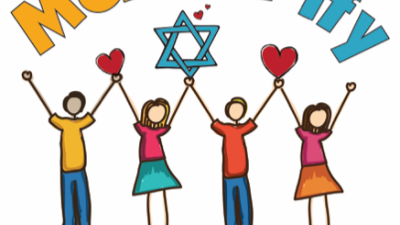
Mensch-ify is an alternative learning program that is held twice a month at Congregation Or Ami for families with children in Pre-K to 6th grade. It is a developmentally appropriate program, built upon the parent-child co-learning experience, that combines stories, songs, art, movement, and play to provide Jewish families with the tools they need to live a Jewish life that works for them. Mensch-ify is designed to reach parents of diverse Jewish backgrounds who have a desire to raise their children to be mensches without the formal requirement of attending traditional "religious school,” and who may not have been seeking to join a synagogue.
- Key Program Elements
- Who are the Learners?
- Who are the Educators/Learning Facilitators?
- When and Where Does the Learning Happen?
- What is the Learning? How is it Designed?
- What Were You Trying to Achieve with this Model?
- Key First Steps and Recruitment Plan
- Role of Governance and Clergy
- Budget
- Hiring Needs
- Professional Learning
- Challenges and Trouble-Shooting
- Evidence towards Thriving
- Relationship of Model to Congregational Learning System
- How Do You Describe Your Congregation?
- Supplementary Materials
Key Program Elements:
Each Mensch-ify session has both unique and ritualized elements which are listed out below.
Entry
-
There is always a greeter at the door who gives the families their name tags. next families check-in, and then participate in a “visual survey.”
-
The “visual survey” consists of a simple, non-judgmental question. For example, after learning about the value of caring for the earth, a family may be asked: “Were you able to do a “mensch-ify me” in the last two weeks? Were you able to put the value of caring for the earth into action?”
Opening
-
Everyone then sits on the floor in the sanctuary in two big circles; children sit in the inner circle and adults in the outer circle.
-
The family time opens with everyone singing the song of the year; this year it is a B’tzelem Elohim song. (Early in the year, participants learned about being made in God’s image and how that relates to being a mensch.)
-
After the song, families share “Oys and Joys” with each other - one thing since the last gathering that was an “oy” and one thing that was a “joy.” Then as a group, each family shares “joys.”
-
This opening works very well for community building and for breaking the ice.
Havdalah
-
Next is a Mensch-ify Havdalah, during which they talk about separating from the rest of the weekend and going into Mensch-ify and the new week.
-
The theme of the week is then introduced. The educators may use costumes and plays or, for example, a Shaboom video, to introduce the theme. The theme is always “Mensch-ify my…” (Mensch-ify my earth; Mensch-ify my body; Mensch-ify my friends).
Once the theme is rolled out, Mensch-ify looks different every single time. What is constant is that there is always family time, always mensch time (kids separate off, and adults separate off), and always a closing circle.

Who are the Learners?
The learners in Mensch-ify are children from Pre-K through 6th grade and their parents.
At Or Ami, there are 200 children in K-6 and 85 teens in 7th-12th grade. Fifty of the children in K-6 are in Mensch-ify; the rest are in the drop-off program. Families do not need to be members (Or Ami uses the term partner, rather than member) to be a part of Mensch-ify.
Who are the Educators/Learning Facilitators?
There are four Mensch-ify teachers: K-1st, 2nd-3rd, and 4th-6th and one pre-K teacher who leads Mini-mensch. Several teachers are from HUC or have taught in the Mishpacha program. The Youth Program Manager is one of the teachers. There are also teen madrichim who assist the teachers.
25 children (half of those enrolled in Mensch-ify) are choosing to do both Mensch-ify and the drop-off program.
When and Where Does the Learning Happen?
Two Sundays a month from 9:00-11:30 am.
The congregation meets in a rented space. Mensch-ify takes place in large rooms, classrooms, the parking lot, any place that is available in or near the building.
What is the Learning? How is it Designed?
This year the Director of Education is writing all the lesson plans and scripting the lessons. with teachers adding their own flair. In the past, teachers had written their own lessons for Mishpacha based on general objectives. The Pre-school teacher learns what will be happening at each Mensch-ify program and creates the plan for Mini-mensch.
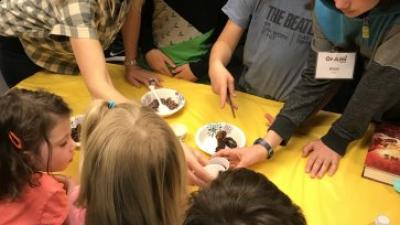
As described in the model summary above, there is a basic structure to Mensch-ify and also a unique element each time the families meet. The learning component changes each time, but the focus is always on how to apply Jewish values to our own lives. The learning is designed to respond to the parents’ big questions:
-
In the world in which we live, how do we raise a good Jewish human being?
-
How do we combat the anti-Semitism, the shootings, the not feeling safe?
-
How do we raise our children to be mensches? For example, when families are learning about Abraham, they want to know how they can be more like Abraham. The focus of the experience would be on the values that we learn from Abraham and how we put these values into play in our own lives.
Learning is also designed to provide families with tools, such as how to strengthen positive relationships in a family and to help them bring these Mensch-ify tools outside the synagogue space. For example, in January families were encouraged to have a family fun day and to implement the values they learned in December’s Mensch-ify. Families who reported back about how their day had brought that value to life, received a gift certificate to an ice cream store. One family responded that they had a “no electronics” day and played board games together. Or Ami intentionally offers incentives and holds people accountable. They find that the participants want to report back.
What Were You Trying to Achieve with this Model?
Or Ami was seeking to have an alternative program that would engage less-connected families. They knew that parents were thirsting for "parent and me" experiences without having to over-commit and over-schedule their families. Parents had expressed that they were looking to fill their minds with the skills to raise kind, compassionate, conscientious, and resilient mensches with integrity and honor.
With this in mind, Mensch-ify was designed based on the following goals:
-
Parents will gain a specific set of tools and skills to raise their children as Jewish mensches, defined as young people who are kind, responsible, and who care for the world around them.
-
Children will learn how to live as Jewish mensches in their everyday lives: to practice kindness and compassion, engage in activities to improve the world, and act with integrity.
-
Families will obtain a basic knowledge of Jewish texts, traditions, and rituals that will sustain their goals of raising mensches.
-
New families will help create a supportive community and Jewish second home for themselves in connection with current members of the congregation.
Having an alternative program, in which learners can choose between a weekday drop-off program and Sunday morning family learning, also allowed for greater flexibility and alleviated conflicts with sports and other seasonal extra-curricular activities. At the beginning of the year, families register for the program of their choice, either the drop-off or family learning. In the last few years, Or Ami has had an increasing number of families sign up for both programs, with learners attending both for the entire year. If during the year a child’s extracurricular activities schedule changes, then learners can switch and attend the other program. Or Ami tries to be flexible.
Key First Steps and Recruitment Plan (and paying attention to changes):
Prior to Mensch-ify, Or Ami ran a program called Mishpacha, an alternative family program that met two Sundays a month. It was an alternative to a drop-off program that met once a week on Wednesday weekday afternoons. Mishpacha was created by the congregation’s rabbis, HUC-JIR interns, and a group of lay leaders who came together to identify what they wanted out of Jewish education and arrived at family learning. The content of Mishpacha was on a seven-year cycle, with the content designed so that a learner who was in Mishpacha from K-6 would learn the same content as the learner in the drop-off program. Michpacha was very successful because it brought the synagogue into the home and the parents loved learning. At one point, Mishpacha got so big that Or Ami had to run back to back sessions.
About three years ago, Or Ami noticed that participation in Mishpacha was beginning to decline. Mishpacha had run for about eleven years, and Or Ami knew it was time for a change. They began a process, first with Isa Aron, a professor in the Rhea Hirsch School of Education at Hebrew Union College, talking about assumptions about the program, and crafting focus group questions to hear what families wanted or needed. They also worked with an outside consultant. Or Ami formed a “dream team” of families who had been part of the Mishpacha program in the past, families who were currently in the program, and potential families who the education director wanted to engage but knew that these families had some issues with Mishpacha. From this team, Or Ami learned that families wanted to keep the basic structure of Mishpacha (meeting two Sundays a month from 9:00-11:30 am) and that they wanted the learning to be relevant to their family and their role as a parent.
Recruitment:
-
Or Ami sought to make the cost different from – and less expensive than - their traditional program.
-
The congregation was able to get a generous Pre-K to 12th Grade grant from the Jewish Federation of Greater Los Angeles that allowed them to charge less for the Mensch-ify program than that of the drop-off.
-
Or Ami considered the mindset of most young parents and reasoned that people are more likely to show up if they know they have paid a specific amount for a set number of sessions.
-
They publicized the program and its cost as: "If you are going to pay $20.00 a session for karate, pay $20.00 a session for Mensch-ify."
-
The educator and team also did a lot of talking about Mensch-ify. They told families: "Here’s what you are going to get from this program. We will teach your kids in a fun, camp-like way, how - for example - to sit at a table and be a mensch."
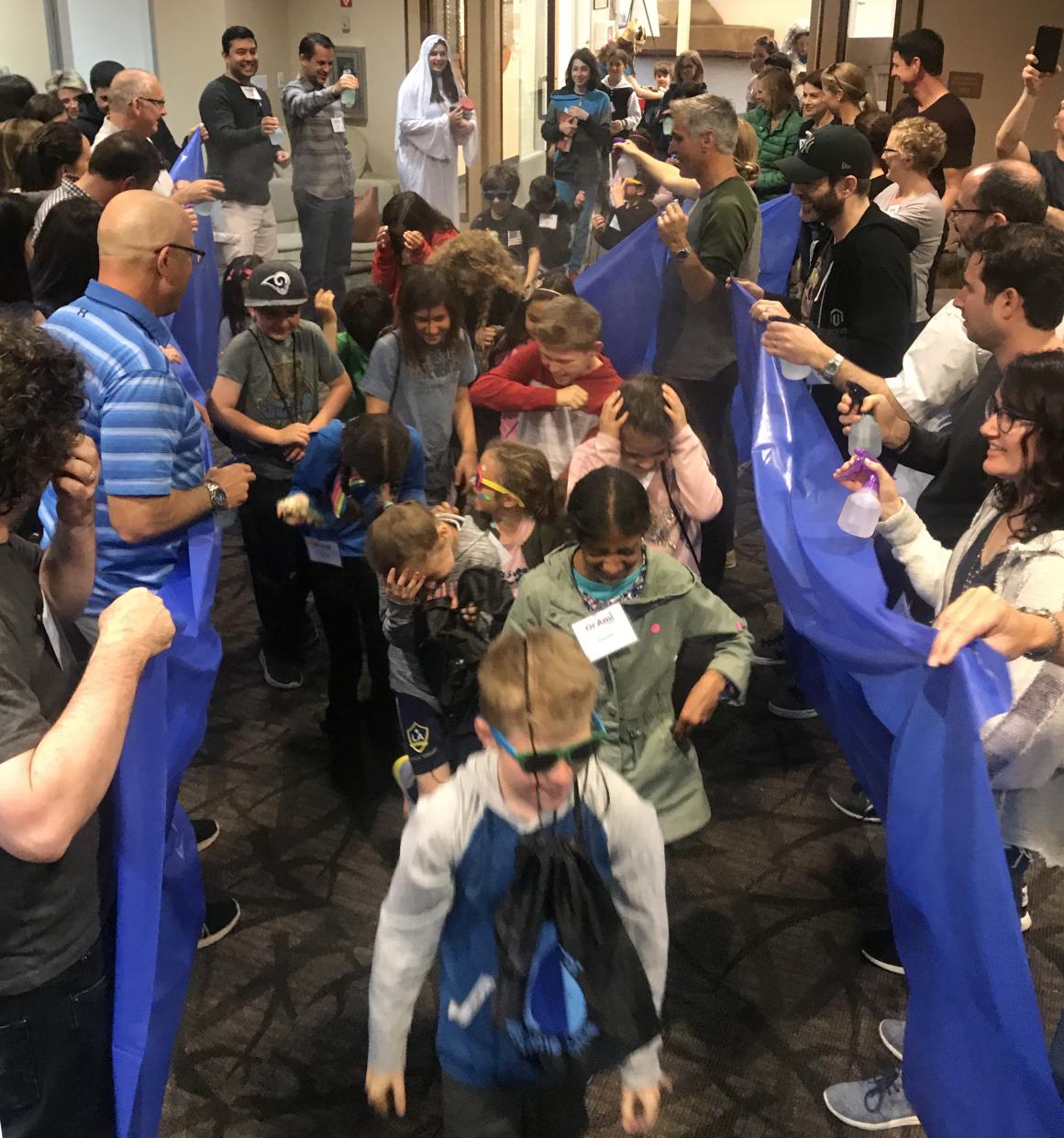
Role of governance and Clergy:
Different members of the clergy may play different roles. This includes everything from playing a character in the skit that is the set induction for the day, to facilitating family group discussions. For example, the Director of Education (who is one of the clergies) dresses up as the Mensch Tiger (in a tiger costume) with a mensch sweatshirt and visits all the kids. Sometimes the Mensch Tiger acts like a mensch or and sometimes the Tiger does not act like a mensch; the learners have to coach the Tiger how to be a mensch. The Senior Rabbi and the Director of Education teach the parents’ class. The Director of Education does all the setup and cleanup of the entire program as well as scripting the lessons and preparing the staff and madrichim.
Budget:
Or Ami received a one-year PreK-12 grant through the Los Angeles Jewish Initiative Federation that paid for around 20% of the costs. The remainder came from program fees, High Holy Day appeal, and the Rabbi’s discretionary fund.
Hiring Needs:
Designing the learning for Mensch-ify takes a lot of time. This is the first year that Or Ami does not have a rabbinic intern working in the school, and the Director of Education, with the input of the Senior Rabbi, does the bulk of the planning. (The Director of Education shared that she loves doing this preparation.) The Director of Education needs someone who can be a thought partner and someone who can format lesson plans. Last year’s rabbinic intern wrote a skeleton curriculum for Mensch-ify which included texts, resources, and ideas that can be built upon.
A teacher for Mensch-ify needs to be able to work with all ages.
One of the most important aspects is that the teacher is confident enough to lead adults/families in discussions and activities; these discussions are a central huge piece of the Mensch-fiy program.
The teacher also needs to be comfortable with a wide range of roles, such as dressing up, acting silly, and stepping in as a substitute faculty.
Professional Learning:
The staff attended a lecture by Brené Brown, read one of her books, and discussed the book together.
Challenges and Trouble-Shooting:
The education director is wondering about 4th, 5th, and 6th graders. She is curious about how they feel Mensch-ify is going. The larger questions are: How do you engage K-6 at the same time? For Tu B’shvat, K-3 did one experience while 4-6 had another experience. Parents could choose where to go. Should the grades be split or should families remain together?
Another issue is the aging out of Mensh-ify. Families who currently have a child in 6th grade and a younger child will not have children in the same program after this year. The struggle/challenge is about how to keep those families and children engaged. The education director has set up a meeting with families who have 6th graders and high schoolers to discuss this. This was an issue with Mishpacha, and it eventually became a program for younger families.
Or Ami will be doing serious evaluation at the end of the year, to figure out next year. As part of their grant, they will be doing visual surveys and phone calls to gather data.
Evidence towards Thriving:

On a basic level, Mensch-ify is working because people are making friends. The majority of Mishpacha families used to come for adult time because they got to learn and it was a natural way to make connections with other adults. People are bringing friends and making friends. Spouses are coming together. The Director of Education reflected that it is lovely that both parents are coming to Mensch-ify. One of the rabbis is an expert in parenting and the adults highly value learning with him. In addition to Mensch-ify, Or Ami offers free tot programs, Kid-ish Club, Shabbat Splash Pad, meet-ups at the park or a play-space, and Tot Shabbat. The content is working: It is at the top of many people’s minds. There is a vocabulary that kids are learning by doing. Let’s do it with mensch behavior: Be a kind, caring, and compassionate person. Parents report that their children are bringing these behaviors home. What is learned at Mensch-ify is easily applied to daily life. For example Mensch-ify my Birthday Party included having children playing in a Bounce House. The value was respect and what it means to show Kavod. Children learned and practiced being patient and respectful, watching out for smaller children, and other mensch-like behavior.
Relationship of Model to Congregational Learning System:
Mensch-ify is an alternative program for the weekday drop-off program. Students may opt to participate in both programs simultaneously.
How Do You Describe Your Congregation?
Or Ami is a young synagogue, it is 21 years old. It is a Reform congregation with 400 family memberships. There are two rabbis (one who serves as Director of Education) and a cantor. There are 200 learners in the religious school, 50 in Mensch-ify.
Supplementary Materials Include:
We have placed the Table of Contents here at the bottom as well, in case you'd like to jump back to a particular section.
- Key Program Elements
- Who are the Learners?
- Who are the Educators/Learning Facilitators?
- When and Where Does the Learning Happen?
- What is the Learning? How is it Designed?
- What Were You Trying to Achieve with this Model?
- Key First Steps and Recruitment Plan
- Role of Governance and Clergy
- Budget
- Hiring Needs
- Professional Learning
- Challenges and Trouble-Shooting
- Evidence towards Thriving
- Relationship of Model to Congregational Learning System
- How Do You Describe Your Congregation?
- Supplementary Materials
- Models-In-Action
- Intergenerational Learning
- Diversity, Equity, and Inclusion (DEI)
- After School and Beyond
- Congregational Learning
- Family Engagement
- Educator Training
Discover more

Family Learning Models focus on families both learning and growing Jewishly through shared experiences and study.
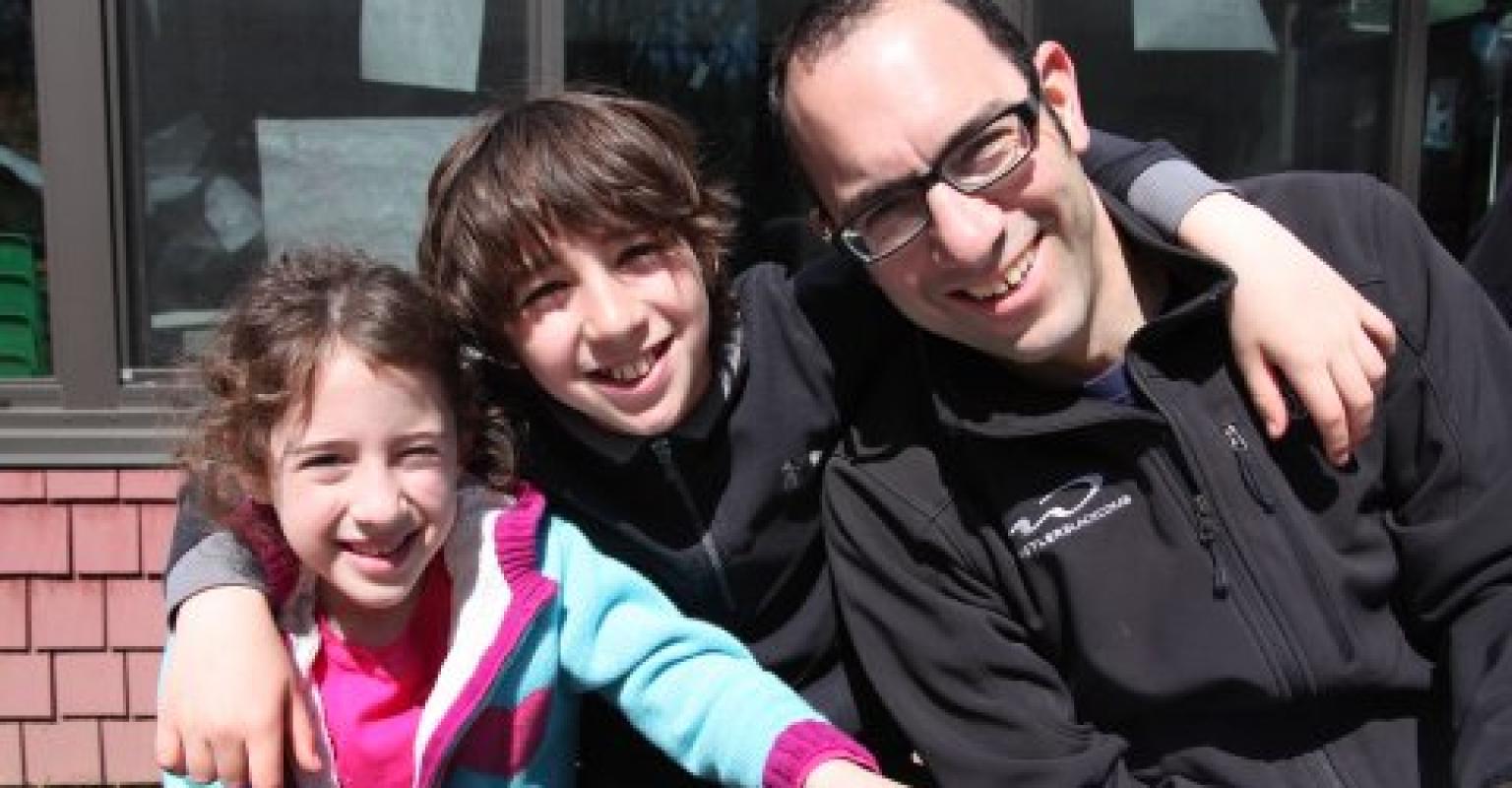
Temple Adat Elohim, Thousand Oaks, CA. Families come together twice a month, once to experience Shabbat as a B’Yachad community and another time to help heal the world by participating in Tikkun Olam (repairing the world) projects
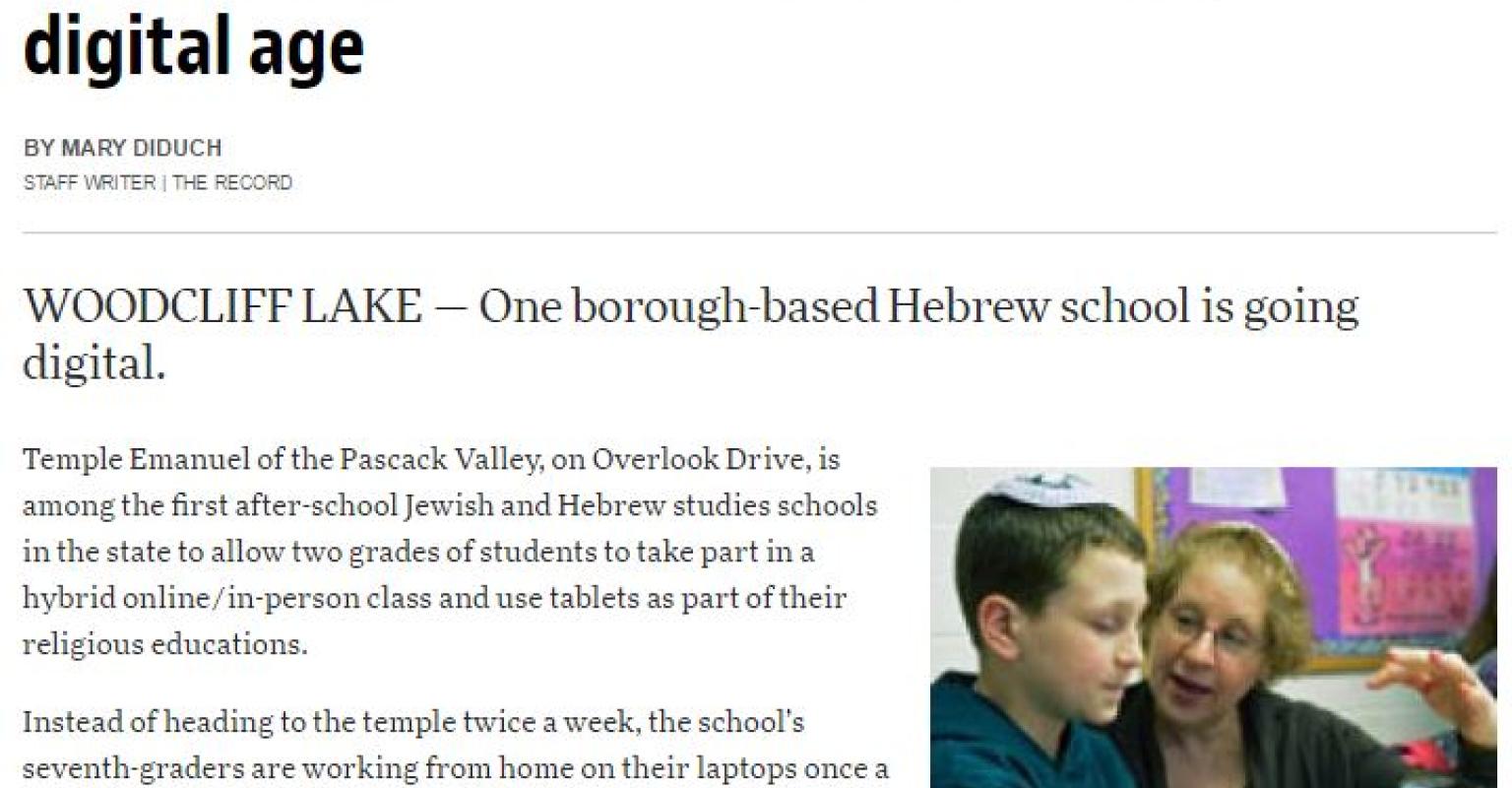
Temple Emanuel of the Pascack Valley (TEPV), Woodcliff Lake, NJ. This online, opt-in, home-based learning model for 7th-9th graders is a partnership with JETS Israel (Jerusalem EdTech Solutions).
